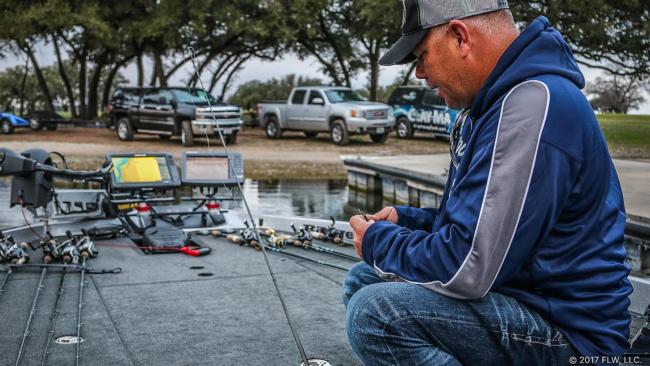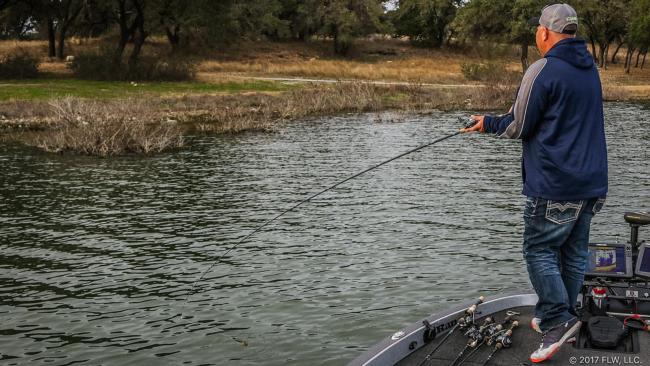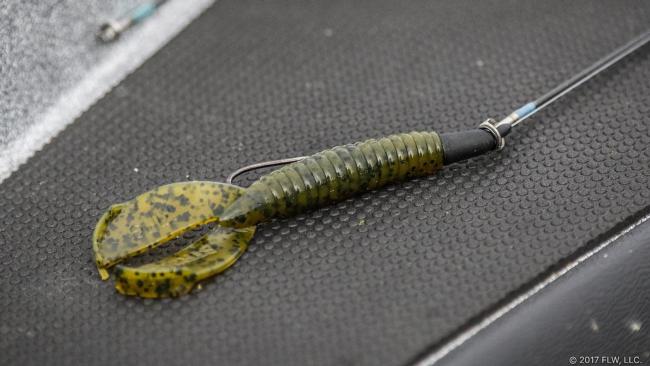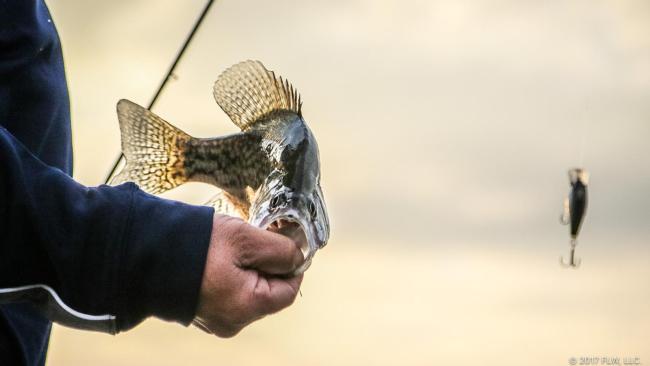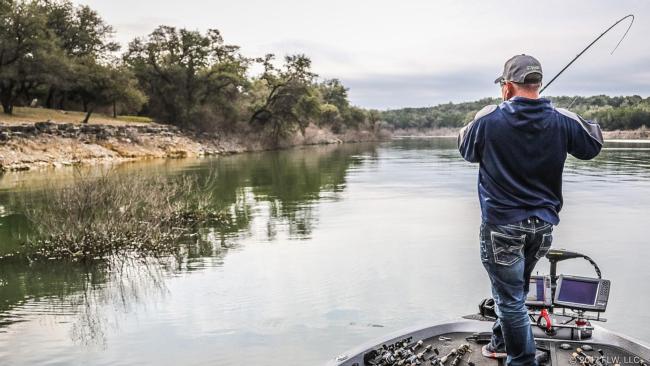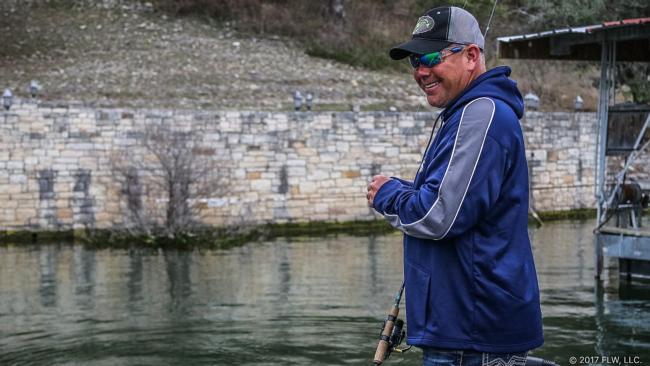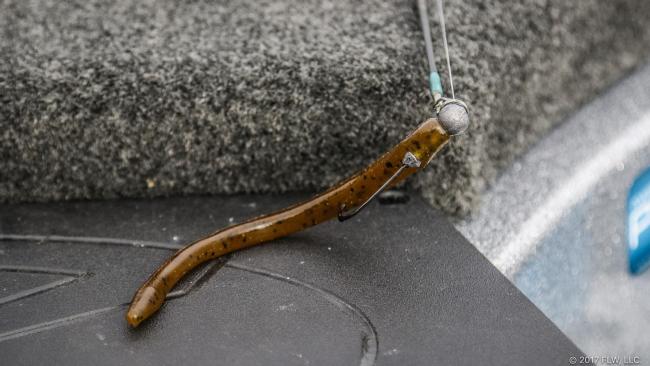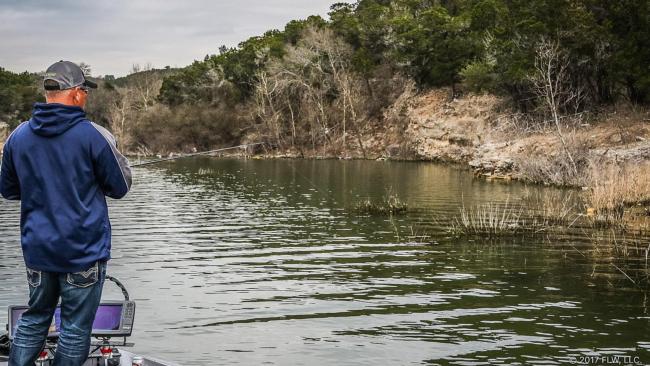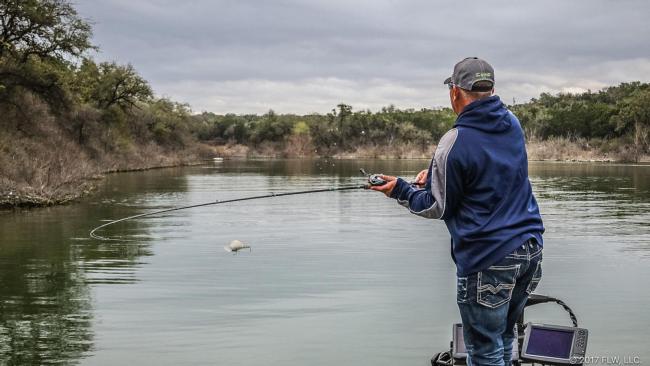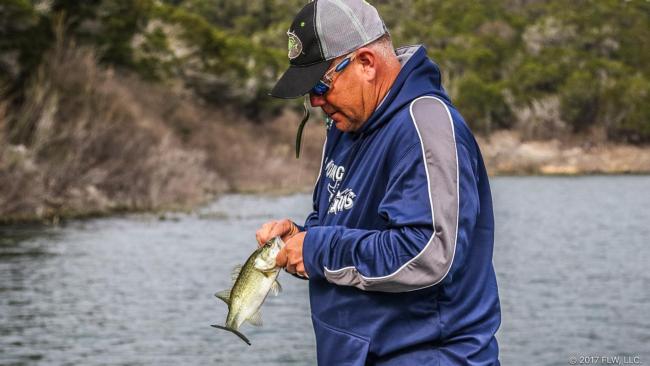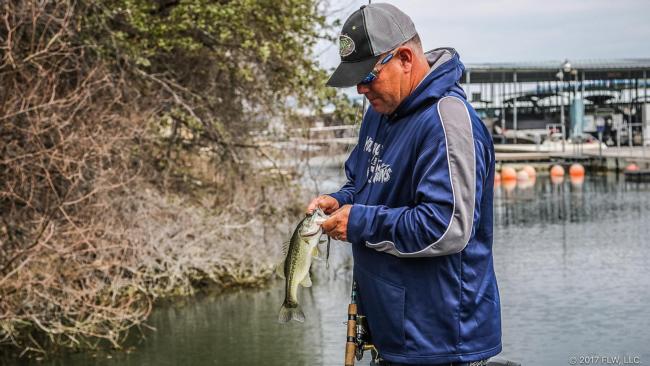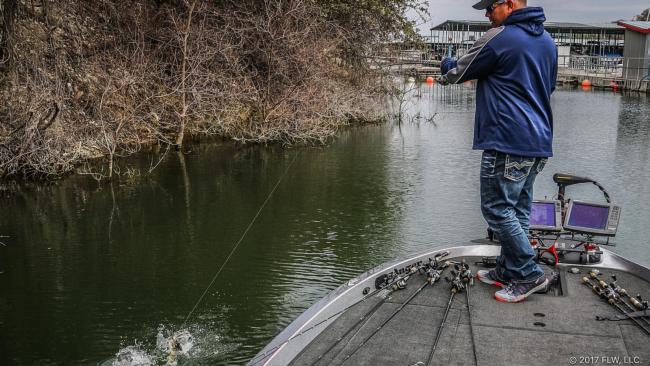In the Boat with Reyes
Practicing on Travis for stop No. 2 of the FLW Tour
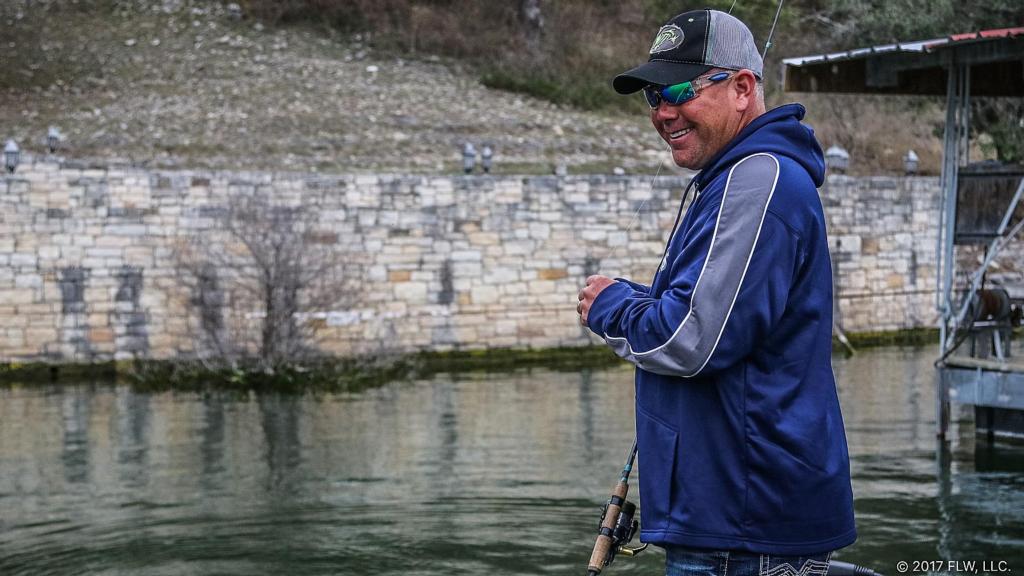
The second day of practice for the FLW Tour event presented by Quaker State at Lake Travis dawned almost exactly like the first: cloudy, calm and unseasonably warm, with air temperatures in the 60s and water temperatures hovering right around 60 degrees.
Huffman, Texas, pro Jason Reyes, fresh off a top-20 finish at Guntersville, let me ride along for a few hours Monday morning on what turned out to be his first practice day on the water, having missed Sunday for his son Jesse’s baseball tournament.
We put in on a private ramp about midway down the lake, and Reyes almost immediately swerves into a small nearby cove.
Reyes starts off throwing a Strike King Twin Tail Menace Grub in 7 to 8 feet of water off a little point not far from the launch site. The sky is mostly overcast, with a water temperature of 62. Reyes quickly switches to a spinnerbait, then a small swimbait retrieved over the tops of submerged brush.
“A couple years ago this lake was like 40 feet down,” he says. “But now all these bushes are submerged, and I think they’re going to be in play this weekend. All these bushes are growing a fair way out into the lake. It’s so early for the lake this year. It feels like spring.”
Reyes continues down the shoreline, occasionally turning to cast to fish busting farther offshore. He hooks a crappie, and as he takes it off the hook Reyes reminisces about his varied catch at Guntersville.
“I caught all sorts of stuff,” he recalls. “I caught crappie, catfish, drum, an old net, someone’s lost Rat-L-Trap, and I foul-hooked a water turkey.”
Reyes did manage to catch a few bass as well, finishing 13th with a three-day total of 13 fish weighing 42 pounds, 14 ounces.
He catches one small bass, then pulls up for a long run toward the dam area.
“I think both ends of the lake are going to be in play this week,” he says as he motors into one of Travis’ many dock-covered arms. “There are so many docks on this lake that if a guy can get something going on them it’d certainly broaden the horizon a little bit. I like to flip up in the bushes, but over the years I’ve learned to back off and have gained confidence fishing deeper. A guy can be one-dimensional and do well a few times, but there comes a time when that won’t work.”
Reyes works a 4-inch green pumpkin finesse worm on a shaky head, skipping it under and around docks, retaining walls, rocks and submerged brush in water that ranges from as deep as 20 feet around the dock ends to 2 to 3 feet right up against the rocks.
“I’m just searching around for some reaction bites,” explains Reyes. “A shaky head gives you a good indication of the size of fish in the area. You can catch a 7-pounder on it or a 12-incher.”
A bit later Reyes notices fish busting off a small, gradually sloping finger point jutting into the middle of the cove.
“That’s going to make me pick up my swimbait,” he says, picking up his swimbait rod and making a few exploratory casts across the point. Nothing bites, so he pulls up and goes down the lake a mile or so before pulling up into a small arm containing a shallow, gradually sloping shoreline dotted with scattered clumps of submerged brush leading back into a narrow creek channel.
Reyes alternately works the Texas-rigged Menace and a Yamamoto Senko through the brush, which sits in about 4 to 5 feet of water. He misses a couple short strikes. Then, as the sun begins peeking through the clouds and the air temperature slowly climbs into the upper 60s, Reyes switches up to a square-bill crankbait, getting several hits from small bass.
Around 10 a.m. he moves across the lake to a long, winding arm where Reyes works the shaky head along the steep bluff shorelines in 10 to 12 feet of water. The arm gets progressively shallower as he works farther off the main lake, until he ends up in a small creek arm in 3 to 5 feet of water with submerged brush and Johnson grass along both sides of the arm. Reyes continues to throw a combination of the shaky head, Senko and the square-bill crankbait. He picks up a few small fish, then misses a nicer one.
“I’m just trying to mix it up with a combination of fall baits and motion baits to see what sticks,” he explains. “It’ll be interesting to see how the pre-tournament weather impacts how we’re going to fish this thing. I don’t think the fish are really where we want them to be, spawn-wise. We’re all still trying to figure out if the bass are coming up shallow or if they’re still deeper. It doesn’t seem like a typical spawning setup yet.”
Eventually he pulls up and heads back to the ramp, but not before trying one last spot, a narrow inlet densely packed with docks, boat slips and moored sailboats.
“I caught some fish here back in 2007,” he says. “But I haven’t been back here since. I thought I’d give it a cast or two.”
Reyes goes back to his favorite searching bait, the 4-inch green pumpkin finesse worm on a shaky head, and quickly begins catching small bass along the brush behind the marina. As he does he explains his practice philosophy.
“This one’s going to play out a little different from Guntersville,” says Reyes. “We just came off a winding tournament where we were throwing Traps over and over. Then we come here and we may hit it where we’re going to need to slow it down. I’m not a guy that needs to catch a ton of fish in practice. I just need to have an idea of what I need to do. I don’t get nervous if I’m catching 25 a day. I just want to feel comfortable with the technique I settle in with rather than seeing how many pounds I can accumulate in practice.”
As for what it will take to win on Travis, Reyes predicts a tight finish.
“I don’t think there’s going to be a lot in terms of weight between making it and not making it. I think one or two good fish are what’s going to swing it.”
